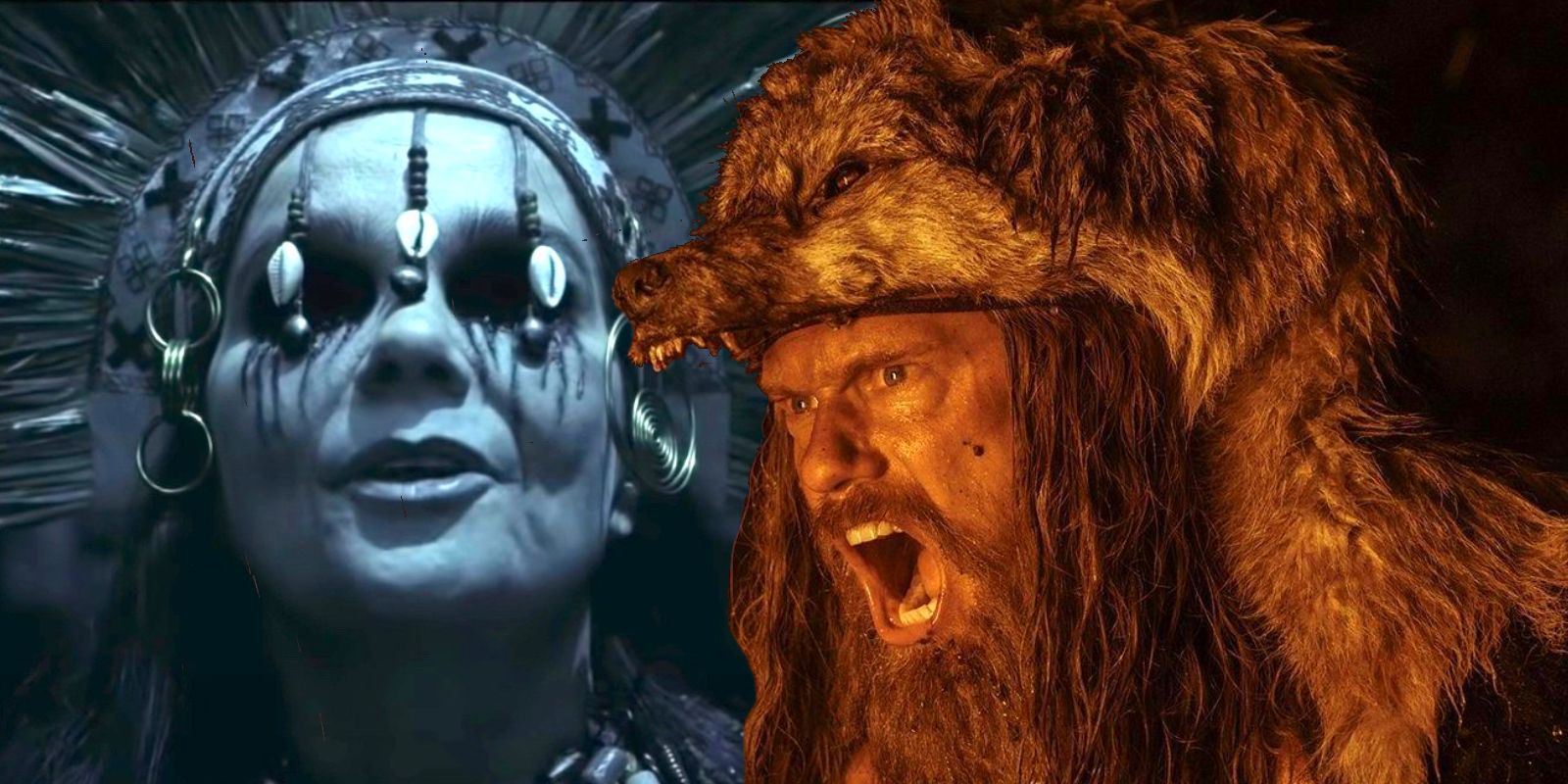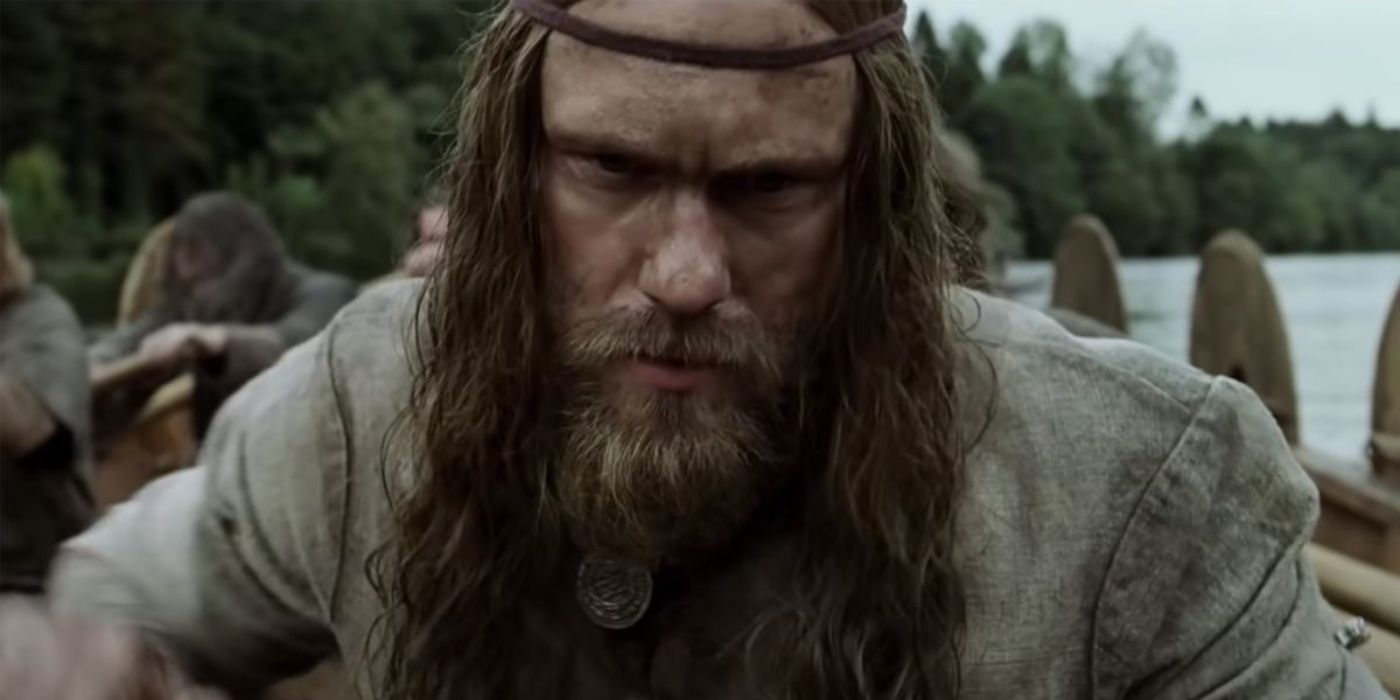Warning: Spoilers for The Northman!
Visionary director Robert Eggers’ latest film The Northman is an otherworldly Viking tale wherein its protagonist Amleth experiences mystical visions that guide him on his quest for vengeance. As a direct inspiration for William Shakespeare’s Hamlet, the legend of Amleth is by no means a new tale, but the way Eggers chooses to frame this particular retelling of it is certainly original. The film acts as a powerful cocktail of ultra-realism and the supernatural, and one of the questions that its story leaves viewers with is whether Amleth’s visions are in fact real or not.
Considering Eggers’ previous stellar work, it’s no surprise that reviews for The Northman have been so positive. Much of the praise has been directed at the use of Norse mythology and the aforementioned supernatural, but there are no easy answers to be gained from the film regarding its departures from reality. However, those lingering questions seem to be intentional.
Amleth’s visions and otherworldly encounters throughout The Northman are left mostly ambiguous – yet Eggers does leave some interesting clues regarding what is real and what isn’t. His first real encounter with the supernatural comes in the form of the Seeress at the temple of Svetovit. Played rather appropriately by Björk, the Seeress imparts her knowledge of Amleth’s path to him and reveals that he is bound to take revenge on Fjölnir soon. However, the Seeress vanishes from the temple afterward, and both Amleth and the viewer are left wondering whether the entire interaction took place at all or if Amleth merely imagined meeting a Seeress of Norse myth due to his Viking upbringing. Eggers cleverly plays along with this, allowing the camera to pull back dramatically as the Seeress disappears in order to emphasize the supernatural element at play. Furthermore, the casting of Björk in the role is very much a deliberate choice as the Icelandic singer and occasional actor is known for her transcendental music and roles in arthouse cinema.
Eggers wants the viewer to question the nature of The Northman’s reality, and he pulls the same trick again later when Amleth fights an undead warrior for the right to wield a mythical blade. After Amleth strikes the draugr down and retrieves the sword in question, he finds that the skeleton has reverted to its place on the throne. Again, the intent here is to suggest that Amleth could just be imagining things. The Northman is full of tricks, but Eggers is careful not to endorse any particular side too much. Certainly, the talented director seems eager to keep the supernatural at bay and rationalize Amleth’s visions, but he offers plenty of against this very same notion.
For example, there is no doubt that Amleth does indeed wield the so-called “Night Blade” that he finds, indicating that some version of the events involving Heimir’s spirit beckoning him towards it and the ensuing encounter with the draugr must have happened. Moreover, the mythical properties of the sword are downright confirmed when Finnr the Nose-Stub tries to unsheathe the blade to no avail. In another instance, ravens reminiscent of The Witch and The Lighthouse also play a role in The Northman. In this case, they are closely linked to Odin, and a flock of them helps free Amleth and startle Fjölnir and his men. Again, the ravens freeing Amleth can be attributed to his imagination, but their hindrance to his enemies indicates that their interference is not entirely invented.
In this manner, director Robert Eggers is intentionally avoiding any clear answers regarding Amleth’s visions and otherworldly encounters throughout The Northman. His intent seems to have been to offer justifications both for and against the presence of the supernatural, and he certainly succeeded in doing so. As mentioned earlier, there are no easy answers for The Northman blurring the lines between reality and myth. It could be that magic and prophecy are alive and well in Eggers’ retelling of the Scandinavian legend of Amleth, it could be that Amleth was imagining all of his supernatural encounters in a deluded yearning for revenge, or it could even be that the truth lies somewhere in the middle. Whatever the case, it’s clear that Viking history and Norse myth have never been portrayed in such a manner before.


